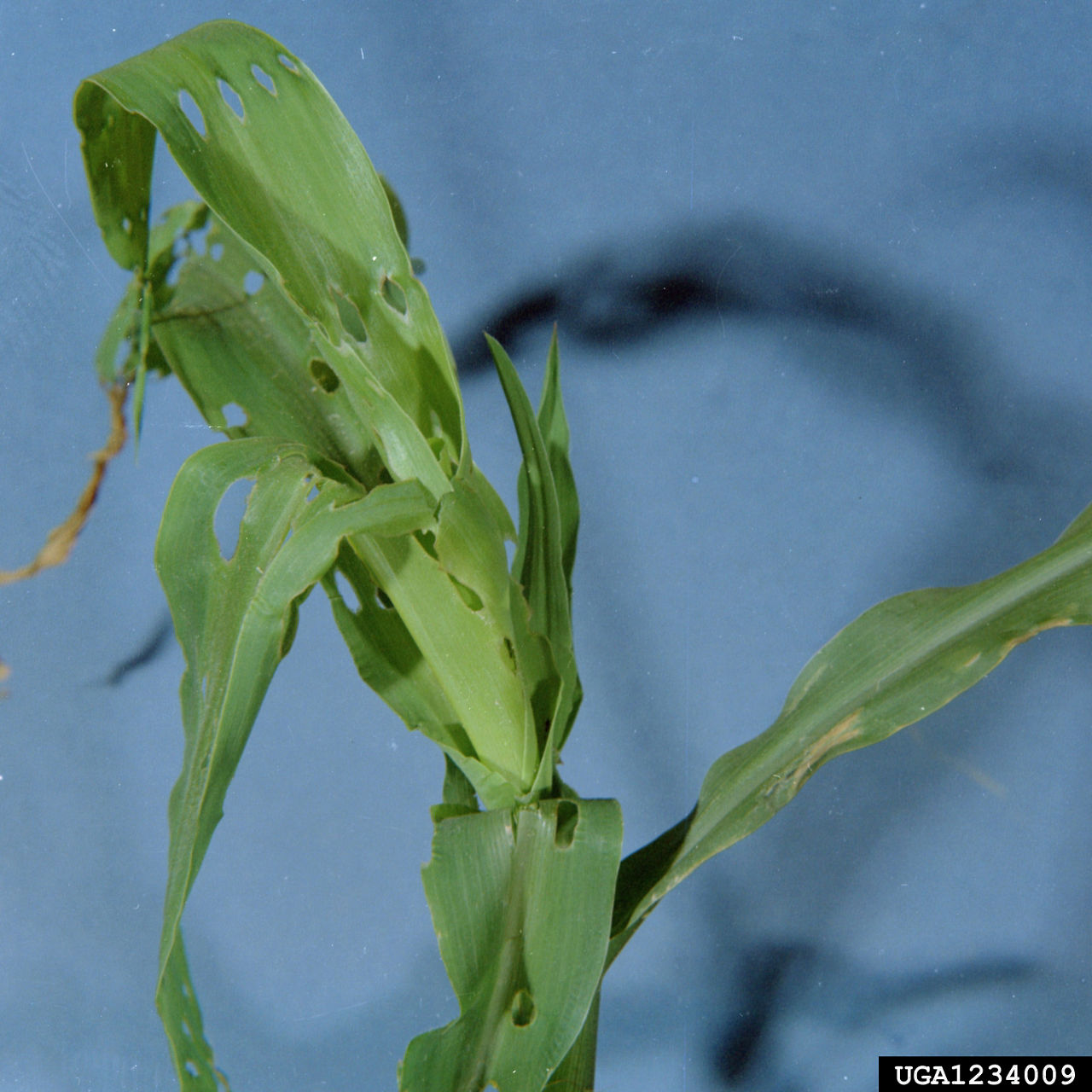Billbug Management in Corn
April 15, 2024
There are two major billbug species that may injure corn, the southern billbug, and the maize billbug which are both categorized as weevils (Figure 1). Adult billbugs are 3/8 to 1/2 inch long, generally a brownish grey color, have long snouts, and six legs. The adult hibernating insects start to emerge around April and May from bordering fields, ditches, woods, and previously infested fields. Though winged, they rarely fly. Mostly dormant during the daylight hours, billbugs are most active at night when they feed at the base of a corn plant. Their feeding results in symmetrical holes in the unfolded leaves (Figure 2).


While feeding, the females deposit about 200 white, kidney shaped eggs in the plant which hatch in about 4 to 15 days. The larvae then migrate downward to feed on the root system of the plant. The larvae/grubs fully develop around 40 to 70 days and pupate around the taproot of the plant (July through September).1 The new adults develop and within one to two weeks emerge again to feed before hibernation. There is only one generation per year.
Billbug infestations can be detrimental. From a corn perspective, feeding during the lifecycle of the billbug can result in stunted, twisted, or suckered plant development. In more severe cases up to a 40% reduction in ear size may occur. For small grains, the larvae/grub feeding can result in bleached heads and lodging. To scout for billbugs, examine twenty consecutive plants for feeding damage in five separate locations for 100 plants total. If five percent of the emerged plants are lost, an application of insecticide should be considered.1
Preventive management tactics to consider include:
- Crop rotation with non-grass crops. This is to be highly considered with corn-on-corn rotations.
- Selecting corn with a strong early season and vigor rating. Planting early to help seedling develop before the insects can become mature.
- Apply an early application of insecticide – Seed applied/T-band application.
- Control nutsedge as nutsedge is an alternative host for the insects.
- Encourage rapid seed growth by using starter fertilizer, optimizing soil pH levels, and using appropriate tillage methods which can help promote rapid emergence and growth.
- Use of a post-emergence insecticide.
- Scouting
Channel Agronomist
Joel DuPre
Source:
1Billbug. NC State Extension. North Carolina State University. https://corn.ces.ncsu.edu/corn-insect-management/field-corn-insect-pests/billbug/
Web site verified 2/27/24. 1110_360867